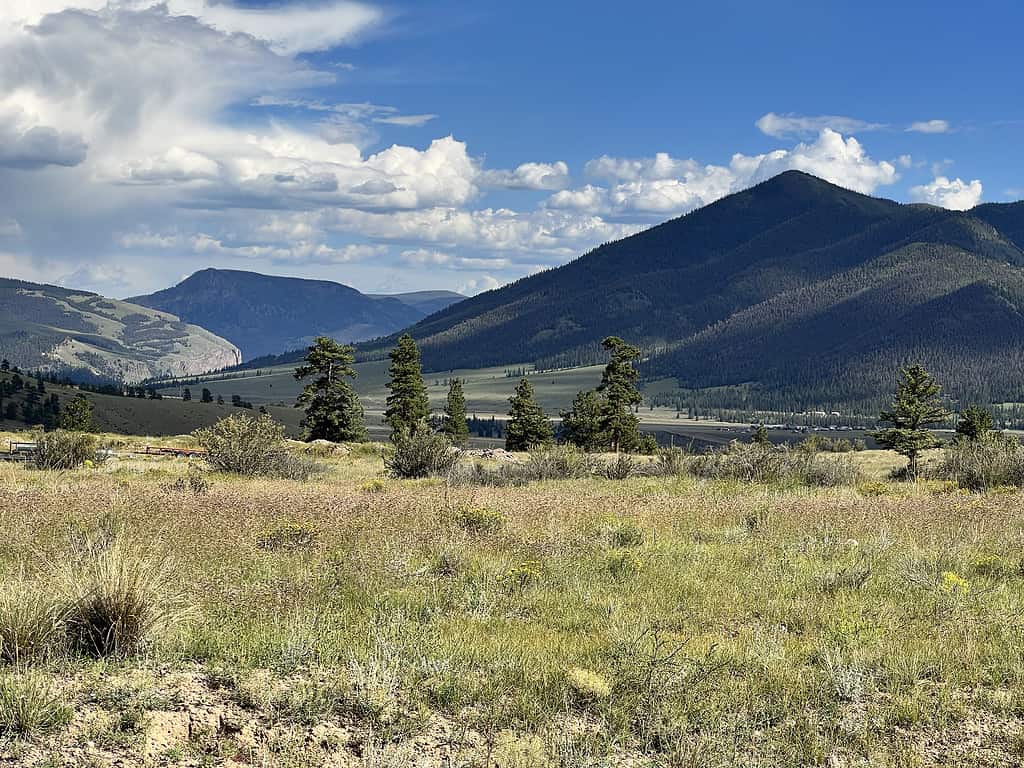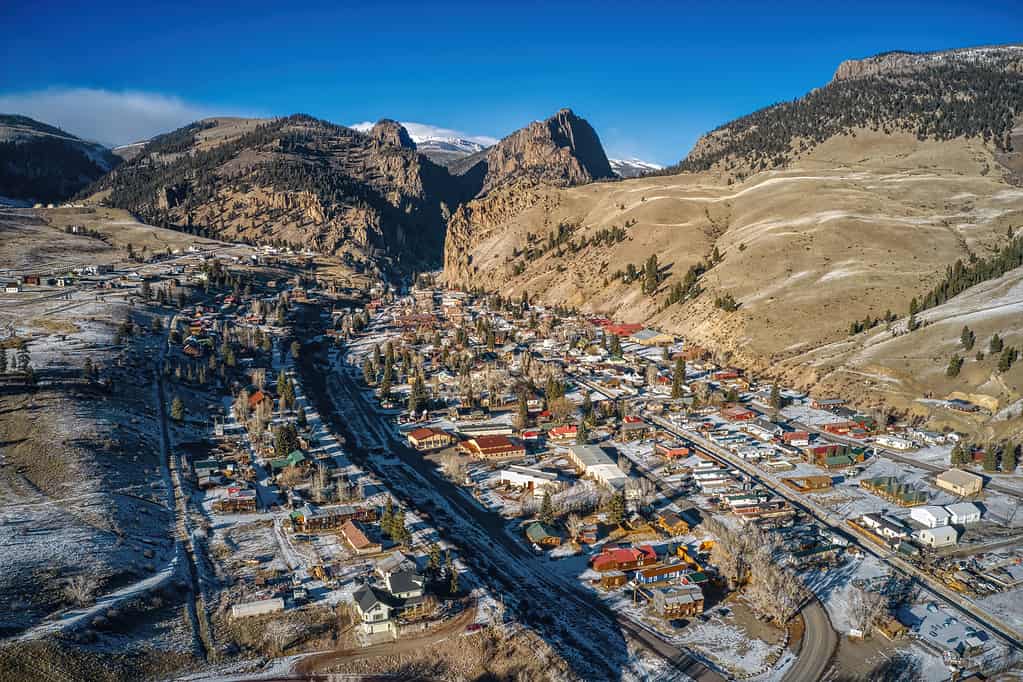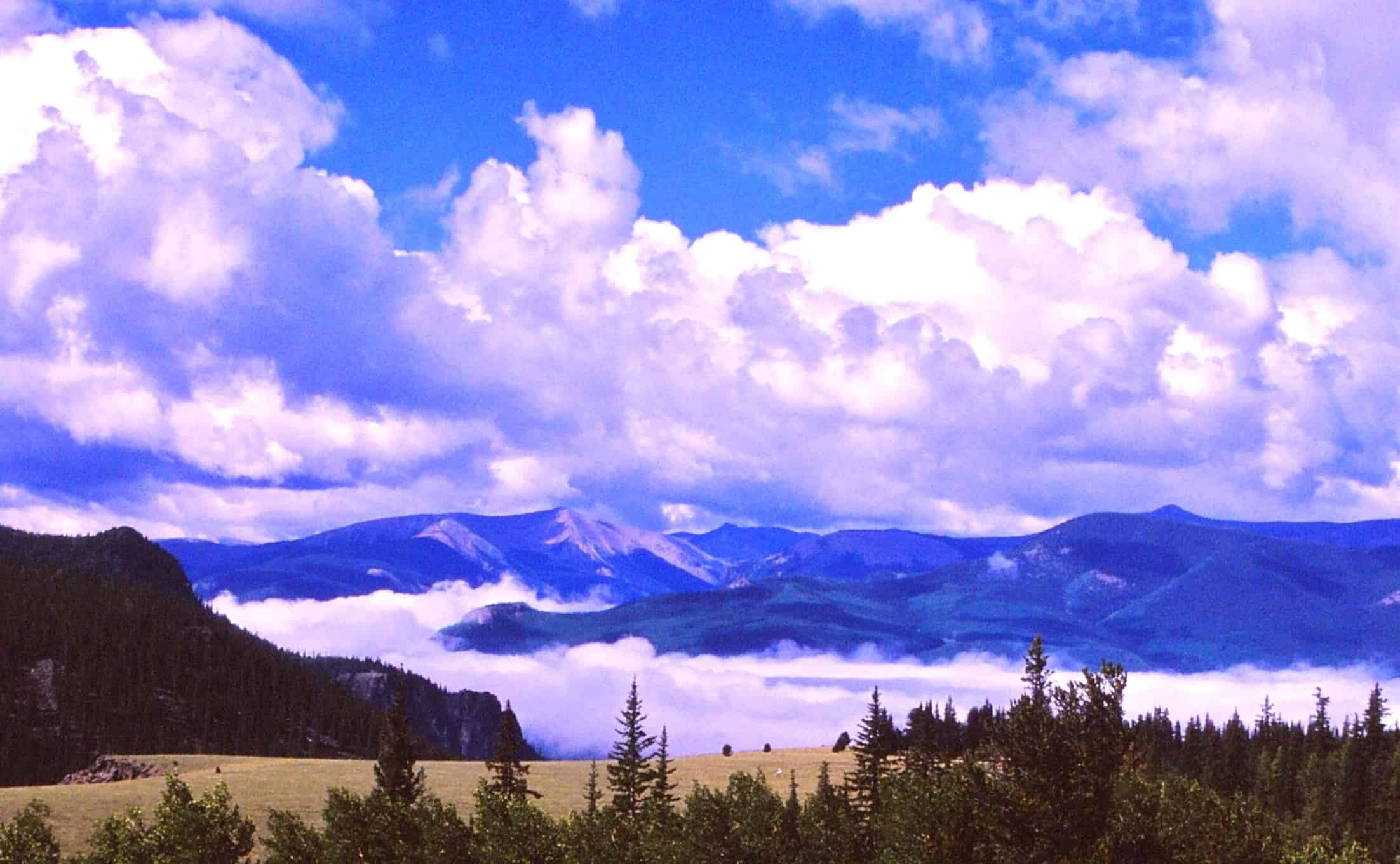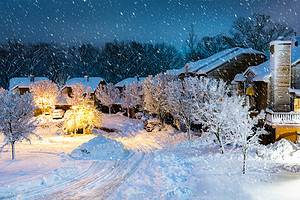Did you know there is a long history of volcanic activity in Colorado? You might be surprised to find out that there are several different types of volcanoes located in the state! The biggest supervolcano left behind what we know as La Garita Caldera, which has a very tumultuous past. Let’s take a closer look at this extinct volcano and find out if or when it will erupt again.

The caldera sits in the San Juan Mountains, the largest mountain range in Colorado.
©Roger Early/ via Getty Images
How La Garita Caldera Was Created
La Garita Caldera is one of the largest known volcanoes on Earth. It sits in southwest Colorado and is about 45 miles wide. The La Garita Caldera is part of the San Juan Volcanic Field and is surrounded by a ring of mountains, including the San Juans, Sangre de Cristos, and Culebra Range. This volcanic field has over 500 volcanoes. This specific caldera is located near the town of Creede.
The La Garita Caldera is one of many calderas that formed during an enormous ignimbrite flare-up in the Four Corners about 40 to 18 million years ago! This area includes parts of Colorado, New Mexico, Arizona, and Utah. It is known as one of the most powerful supervolcanic events in our history and was 10,000 times more violent than Mount St. Helens. It is thought to have covered a significant portion of what is now the state of Colorado. This deposit became known as Fish Canyon Tuff, resulting in a significant amount of volcanic ash flow or ignimbrite deposit. It is thought to cover over 11,000 square miles! Studies of the tuff show that it belongs to this single eruption due to its uniform, bulk-chemical composition.
How Does a Caldera Eruption Differ from Other Volcanic Eruptions
Though they are technically the same, calderas are simply the result of a volcanic eruption. Calderas cause a depression in the land due to the lack of structural support. Thus, a bowl-shaped caldera is created. Conversely, craters form due to the volcanic spewing of lava and ash.
So, what does a caldera eruption actually look like? There are two different kinds of eruptions that can occur, either collapse calderas or explosive calderas. The La Garita was of the collapsing variety. These eruptions are known to be truly massive. The reason for this is because of the way the structure collapses in on itself during its eruption.
When It Last Erupted and the Devastation It Caused
The last time this caldera erupted happens to be the exact time it was created. La Garita in Colorado’s San Juan Mountains exploded in the geologic period known as the Oligocene Epoch about 27 million years ago. Experts believe it spewed out an estimated 1,000 cubic miles of ash.
As stated above, many scientists agree that this was the most powerful display from a supervolcano in the history of Earth. But what did it do to the surrounding area? This blast, which is believed to have emitted heat that reached upward of 1,500°F, nearly decimated the entire Four Corners region. This event sent volcanic rock and debris flying at speeds as high as 75mph and decreased the area’s average temperature by 14°F!
What It Looks Like Today
Do you want to visit this awe-inspiring site? You’re in luck! The area is an excellent space for the adventurous sort. Beginning your hike early in the day is advised, as the caldera is about 12,000 feet high and can become scorchingly hot in the summer months. You can also fish in some regions of the park, but be sure to check in with the ranger station before you head out. Cell service is spotty at best, so bring a map and loads of water. Don’t forget to check out the local natural hot springs after your hike or climb. You can also camp or spend time in the nearby city of Creede, Colorado!

The town of Creede is right beside the Caldera, though it will take about 45 minutes to get there by car.
©Jacob Boomsma/ via Getty Images
Thank you for reading! Have some feedback for us? Contact the AZ Animals editorial team.








